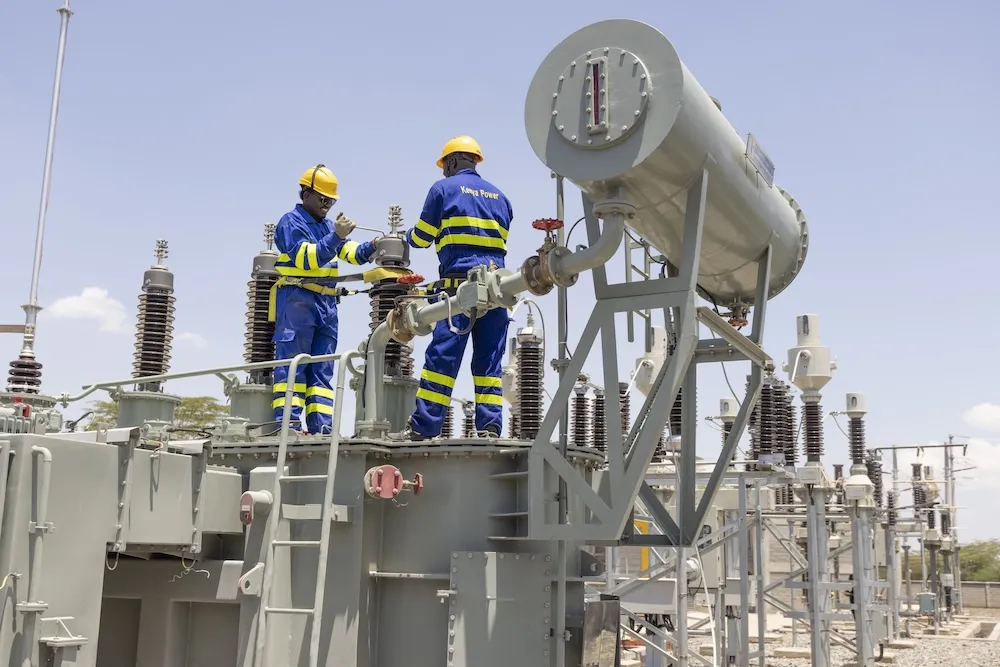Kenya Power Reports Record-Breaking Electricity Demand Surge in 2025
Nairobi, Kenya – August 1, 2025
Kenya’s electricity consumption has reached unprecedented levels, with Kenya Power recording a historic peak demand of 2,362.28 megawatts (MW) on July 23, 2025, surpassing the previous high of 2,325 MW set earlier in July. This milestone, driven by rapid electrification, industrial growth, and seasonal factors, underscores Kenya’s evolving energy landscape and the challenges ahead in meeting rising demand.
A Surge Fueled by Connectivity and Cold Weather
According to Kenya Power’s National Control Centre, the spike in electricity demand is attributed to two key factors: an aggressive push for new customer connections and increased usage during the ongoing cold season. Over the past financial year, ending June 30, 2025, Kenya Power connected 401,848 new customers to the national grid, a significant leap in the country’s electrification efforts. These efforts align with the government’s goal of achieving universal electricity access by 2030.
The cold weather has further amplified demand, as households and businesses increasingly rely on electric heating to stay warm. “The new peak demand is a testament to our commitment to drive national electricity access through various electrification projects,” said Joseph Siror, Kenya Power’s Managing Director and CEO. He noted that demand has risen by 46 MW in just five months since February 2025, when the previous record of 2,316 MW was set.
Industrial and Urban Growth Driving Consumption
Kenya’s economic recovery and rapid urbanization are also key contributors to the soaring electricity demand. Industrial giants like the Kenya Pipeline Company and Bamburi Cement, along with 6,000 large commercial customers, account for 60% of the national power consumption. The manufacturing, construction, and digital sectors are expanding rapidly, with data centers and fintech operations adding significant strain to the grid. From 1,466 MW in 2014 to 2,362 MW in 2025, Kenya’s peak demand has grown at an average annual rate of 4.4%, reflecting the country’s robust economic activity.
Urban households are also playing a role, with the average Nairobi household consuming approximately 208 kWh per month. As more appliances, such as electric cookers and cooling systems, are plugged into the grid, evening peak hours—particularly around 19:40—put immense pressure on the system.
Investments in Infrastructure and Renewable Energy
To meet this growing demand, Kenya Power and the Kenya Electricity Transmission Company (KETRACO) have made significant investments in grid stabilization. Key projects include the completion of the Kimuka 220/66kV substation, which supports power supply to Nairobi and adjacent counties, and the 33kV double circuit interconnector between Narok and Bomet. These efforts have enhanced grid reliability, ensuring no load shedding was reported during the record-breaking demand on July 23.
Kenya’s energy mix remains heavily reliant on renewables, with geothermal and hydropower supplying over 57% of the daily power needs on the record-setting day. KenGen, the country’s leading electricity generator, contributed 13,678.35 MWh from geothermal plants (31.85%) and 10,915.93 MWh from hydropower (25.42%). “We are working to deliver 1,500 MW of electricity, all from renewable sources,” said KenGen CEO Peter Njenga, emphasizing Kenya’s commitment to clean energy.
Embracing E-Mobility and E-Cooking
Kenya Power is also championing innovative solutions to drive electricity consumption while promoting sustainability. The company plans to install 45 electric vehicle (EV) charging stations across six counties—Nairobi, Nyeri, Kisumu, Eldoret, Nakuru, Mombasa, and Taita Taveta—in the current financial year. This initiative supports the growing e-mobility sector, with partnerships like the one with NCBA Bank offering affordable financing for EVs.
Additionally, Kenya Power has established e-cooking hubs in Nairobi, Mombasa, Nakuru, and Kisumu to promote energy-efficient electric appliances. By partnering with schools and hotels, the company aims to modernize kitchens and reduce reliance on charcoal and LPG, further boosting grid consumption.
Challenges and Opportunities Ahead
Despite these advancements, challenges remain. Some transmission lines, such as Muhoroni-Chemosit and Kisumu-Muhoroni, exceeded 120% capacity during the peak demand, highlighting the need for urgent infrastructure upgrades. With electricity demand projected to grow by 6.5% annually from 2025 to 2027, Kenya Power faces the task of balancing supply reliability with rapid expansion. Investments in battery storage and smart grid solutions are under consideration to address intermittency issues with solar and wind energy, which are critical to Kenya’s goal of 100% renewable energy by 2030.
The International Energy Agency (IEA) notes that Kenya’s high renewable energy potential and strong policy frameworks position it as a regional leader in sustainable energy. However, system losses—estimated at 23% in 2023 due to technical issues and theft—remain a concern. New regulations introduced in 2024 to open transmission and distribution to private investment aim to improve efficiency and reduce costs.
A Bright Future for Kenya’s Energy Sector
Kenya’s record-breaking electricity demand signals a thriving economy and a growing reliance on clean energy. As Kenya Power continues to expand its grid, promote e-mobility, and modernize cooking solutions, the country is poised to achieve its Vision 2030 goal of universal electricity access while maintaining its leadership in renewable energy.
For more updates on Kenya’s energy sector and other business news, stay tuned to street.co.ke.

